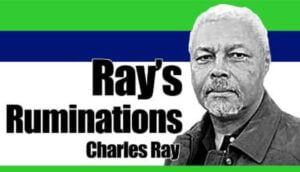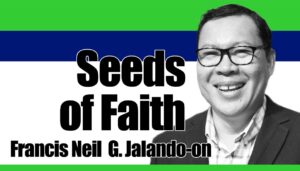- KEITH BRANDON L. CARI-AN
Stepping into the international spotlight has always been a dream for Mark Raymund Garcia, a young filmmaker based in Sagay City, Negros Occidental.
NEGROS NOW DAILY sits with Mark days before the international premiere of “Mga Bag-ong Nawong (sang Damgo kag Katingalahan) [The New Faces (of Dreams and Mysteries)]” at the Singapore International Film Festival.
A CATHARSIS AND A TRIBUTE
Last year, Mark was among the 16 creatives tapped to join the ECQ: Eksena Cinema Quarantine (COVID-19 Filmmakers’ Diaries), a project under the National Commission for Culture and the Arts – National Committee on Cinema, in cooperation with the University of St. La Salle Artists’ Hub.
“Nawong is a personal film for me because it translated the anxieties that I felt during the first months of the pandemic,” explains the 25-year-old filmmaker. The film encapsulated his frustrations on “the repetitive, monotonous, and bleak black and white days” brought about by the resulting lockdown due to the health crisis.
It was also dedicated to his uncle, who was among the casualties of the Philippine government’s ongoing war on drugs.
“This was also my way to remember him. It was my tribute to my uncle and the victims seeking justice.” Mark adds that this creation of his was a statement on what was happening in the country.

FILMMAKING WITH THE COMMUNITY
The community in Sagay City was very excited to take part in producing this film. Elated, the actors even said that, finally, they’ll be filmed with a camera and see themselves move onscreen, Mark recalls fondly.
Even if he told them that their faces would be covered, they’d still say, “What’s important is we know that it’s us.”
“The film would not have been produced without the help of my aunties, relatives, neighbors, and local filmmakers in Sagay City,” he said.
The border restrictions kept him from working closely with his production team, Kayab, since most of its members are based in Bacolod City. They found ways to still collaborate online, but the production was done with the help of Sagaynons, he said.
SGIFF JOURNEY
Mark initially intended for Nawong to join a national film competition in the Philippines. However, they didn’t make the deadline. He said this was because he wasn’t satisfied with the first cut of the film.
“I was beginning to lose hope since we didn’t know any film competitions that would accept our entry. Then I thought to myself that maybe, this could be the same with theatre where your second show will always be the worst,” Mark alludes to his theatre background.
He had accepted this reality but did not stop submitting entries. “Luckily, I got accepted and even recognized,” he said.
Nawong became one of the official selections for the Cultural Center of the Philippines’ 33rd Gawad Alternatibo, where it received second prize in the Experimental category and was named Best Regional Entry. The film was also an official selection for the 2021 Pista ng Pelikulang Pilipino, and in the 7th edition of the Bakunawa Film Festival.
It was always his goal to reach as many audiences as possible. He reached a wide audience on a national scale through these three film competitions. But, for him, reaching an international audience is quite different.
“With more than three decades of history, the Singapore International Film Festival is a very prestigious competition. It has become a rite of passage for all Southeast Asian filmmakers,” Mark shares.
Mark joins fellow Filipino directors Lav Diaz, Dexter Paul de Jesus, and Shireen Seno in the Southeast Asian Short Film Competition roster.

INFLUENCES OF JOURNALISM AND THEATRE
Film critics would define Mark’s film artistry to be very consistent in its theatricality. He attributes his foundations to the principles of theatre.
Mark began his creative journey as an actor which was further enriched during his internship at the De La Salle-College of St. Benilde, and the mentorships of Negrense artists.
He also credits his passion for telling stories to journalism. His formative years as a journalist molded him to gravitate towards telling the stories of people.
However, as a filmmaker, Mark wants to challenge the perception and thinking of his audience.
“I do not want to just present a piece of information. I hope to see my audience discuss what they think about my films,” he explains. He believes that films are a tool to help the viewers think – to trigger and provoke their minds.
“At the end of the day, it’s about helping my audience become more critical about the things that they are consuming. Whether it’s this kind of art, other forms of media, or even what is happening outside the comfort of their homes.”

EXPERIMENTING WITH ART
Before the pandemic, Nawong’s beginnings could be traced during Mark’s interactions with internationally-renowned Sagaynon artist Nunelucio “Nune” Alvarado.
Mark said that during one of his interviews, he took interest in the painted faces of Sir Nune’s “Nawong Series”. He then knew that he had to create an experimental film out of these extraordinary art pieces.
When the health crisis happens, the opportunity to revisit this idea presented itself.
“That idea was meant for the pandemic,” he said as he narrated his process of conceptualizing the film. He began with writing a Hiligaynon poem that will drive the visuals of the story. It was a personal process for him, he added.
The best time to tell stories is during the worst times, he said.
MORE PRODUCERS
“Being an independent filmmaker is difficult, but being an independent regional filmmaker is much harder.” He is grateful for the support of local governments, institutions, and creatives, but homegrown talents need more funding from prospective producers.
Mark hopes that local funders would see the filmmaking industry in Negros Island not only as exposure for artists but as a profitable business as well. Negros has a lot of cinemas back in the golden age of film on the island, he said, adding that even Sagay City used to have one back in the day.
Negrense film legends, such as the late Peque Gallaga, and Erik Matti, were among those who put the island on the radar of the industry, he said.
He said the film industry in Negros has been consistent in supporting local creatives throughout the decades. The producers just need the right people to unveil local stories that will pique the interest of the paying viewers.

THE MAGIC OF NEGRENSE STORIES
Mark believes in the magic of the Filipino culture, especially in Sagay, which is folkloric. “I want to tell stories through the lens of these myths and urban legends.”
His creative vision, majorly influenced by magic realism, seeks to forge an intersection of folklore and reality, and showcase how they affect us as Negrenses.
There are always more stories to tell, he said. Mark plans to write and produce more short films next year. One of his ongoing projects is wrapping up the post-production of a documentary film.
His ultimate goal for 2022 is to finally direct a feature film.
“There has always been a notion that when you talk about films from Negros, sugar has to be in the forefront.” He said there are more interesting stories hidden amongst the sugarcane fields.
“All we have to do is part the leaves for a clearer view.” – NWI




